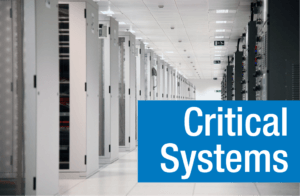
Most football teams have an identity, whether it is a strong defense, imposing running game or an air raid passing game. This identity is determined by the coaching staff and skill set of the current players and governs how they make long term decisions, including prioritizing needs when drafting players for their team. Similarly, data center operators along with upper management have some difficult decisions to make. One of the first and most important tasks is deciding between building and leasing when it comes to their data center identity.
The most successful companies focus their resources on what makes them successful while balancing their ever-growing IT needs and dependence with the inherent risks of an increasingly connected and dangerous cyber-world. Often times, some level of leasing is the final decision to help minimize capital expenses and exposure that may come with an enterprise data center. If leasing is the determined path there are many options, ranging from leasing and building out a “cold dark shell” in a colocation facility to fully managed services to handle all of your IT needs. Most providers who routinely lease space in their facility will be more than happy to walk you through the process and help you figure out what to order off their full menu of services.
If leasing is not the right option, the next step is to build and operate your own enterprise data center. The first thing to do is determine your current needs and put together your plan for growth. It is often helpful to break it up into 5, 10 and 15 year windows, attempting to account for future computing needs while compensating for the inevitable improvements in processing and storage efficiency resulting in increasing power density and decreasing required space. Failing to account for increased efficiency in computer equipment will often result in wasted square footage and even poor thermal performance.
During the design and layout of the facility, it is crucial to leave flexibility to accommodate changes in the technology and how you utilize your data center. Ensuring that high density cooling is easy to implement-by designing options such as future piping connections and provisions for aisle containment-is relatively inexpensive when the space is being built. If these accommodations are not made up front, the risks and costs of construction in a live data center may be prohibitive to the process of growing and maximizing IT operational efficiency in the future. It is also important that the design process takes into account current and proposed codes that could affect future operations, such as economizer requirements, sound regulations and energy codes. The newest building codes requiring economizers in data centers have already been written and will be in effect when each state adopts them.
The same planning and careful consideration must be used when determining the type of specific cooling system for your new data center. There are four major types of cooling:
- Air cooled DX
- Water/glycol cooled DX
- Chilled water
- A custom approach using techniques such as adiabatic cooling with direct or indirect airside economizers.
Each option has a certain balance of upfront cost, expansion cost and operational costs. Typically, standard air cooled or water cooled DX systems are the least expensive up front as redundancy can be handled without needing additional major equipment; they also tend to have the least efficiency in operation. These systems tend to make more sense in data centers that are less than 1 MW and do not project for much growth, as expansions to the mechanical system are expensive. The standard chilled water system is more expensive up front, especially for smaller data centers, but the costs quickly even out as the load grows. Chilled water systems make expansion a relative breeze as the components can be added as needed with relative ease. The efficiency of a well-designed chilled water system will rival that of 100% outside air economizers except in rare cases. The current application of custom HVAC systems utilizing 100% outside air is very geographically dependent and tends to only make sense in the southeast for very large data centers with over 20 MW of load. They often require the most advanced servers and very complex control systems to operate at the upper edge of the thermal envelopes in order to make the increased capital expense a feasible option.
Successful data center operations are as difficult to build and maintain as a championship caliber football team. They require dedication to determine the right fit, ensure that large capital expenditures will pay off and work with the current system, as well as to understand how the current operations work. Treating the data center like a championship team means being willing to objectively examine everything and everyone that makes the data center run, along with being dedicated to provide the proper tools and systems to maximize the efficiency and gain true operational excellence.
Have questions for our experts? Leave your comment below and check out our website for more information.




